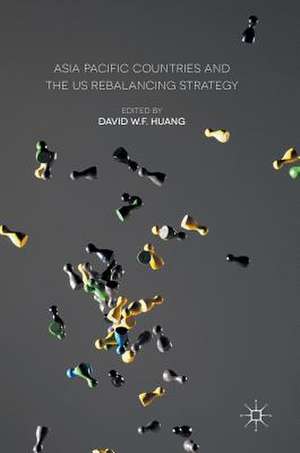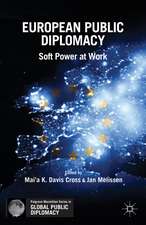Asia Pacific Countries and the US Rebalancing Strategy
Editat de David W.F. Huangen Limba Engleză Hardback – 30 iun 2016
This book examines the success of the US rebalancing (or pivot) strategy towards Asia, placing the US pivot in a historical context while highlighting its policy content and management dilemmas. Further, the contributors discuss the challenges and opportunities that each regional state confronts in responding to the US rebalancing strategy.
In 2011, President Barack Obama laid out the framework for a strategic pivot of US policy towards the Asia Pacific region. Writers in this volume focus specifically on Asian perception of the strategy. Among the topics they explore are: China’s desire to be seen as equal to the US while maintaining foreign policy initiatives independent of the US strategic rebalance; the strengthening of Japan’s alliance with the US through its security policies; the use of US-China competition by South Korea to negotiate its influence in the region; and Australia’s embrace of the strategy as a result of foreign direct investmentthat provides economic benefits to the country.
Preț: 643.34 lei
Preț vechi: 756.86 lei
-15% Nou
Puncte Express: 965
Preț estimativ în valută:
123.10€ • 127.00$ • 102.73£
123.10€ • 127.00$ • 102.73£
Carte tipărită la comandă
Livrare economică 26 martie-09 aprilie
Preluare comenzi: 021 569.72.76
Specificații
ISBN-13: 9781137587978
ISBN-10: 1137587970
Pagini: 269
Ilustrații: XIII, 279 p. 1 illus. in color.
Dimensiuni: 148 x 210 x 23 mm
Greutate: 0.5 kg
Ediția:1st ed. 2016
Editura: Palgrave Macmillan US
Colecția Palgrave Macmillan
Locul publicării:New York, United States
ISBN-10: 1137587970
Pagini: 269
Ilustrații: XIII, 279 p. 1 illus. in color.
Dimensiuni: 148 x 210 x 23 mm
Greutate: 0.5 kg
Ediția:1st ed. 2016
Editura: Palgrave Macmillan US
Colecția Palgrave Macmillan
Locul publicării:New York, United States
Cuprins
1. The Obama “Pivot” to Asia in a Historical Context of American Hegemony.- 2. Challenges to the US rebalance to Asia.- 3. Balancing Signals in the US Rebalancing Strategy to Asia.- 4. The Chinese Response to the U.S. Rebalancing Strategy: Sino-U.S. Relations and Washington’s Pivot to Asia.- 5. Chinese Response to Obama’s Rebalancing to Asia Strategy.- 6. Japan’s “Proactive Contribution” and the U.S. Rebalancing Policy.- 7. The U.S. Strategic Rebalance and South Korea’s Dilemma: Uncertain Future and Force Decisions.- 8: ASEAN-Related Regional Arrangements, China and the U.S. Rebalancing.- 9. America’s Asia-Pacific Rebalance and the Hazards of Hedging: A Review of Evidence from Southeast Asia.- 10. U.S. Rebalancing Strategy and Australia’s Response: Business as Usual.- 11. India’s Response to U.S. Rebalancing Strategy.- 12. From Washington with Love? Taiwan’s Perspective on the U.S. Rebalance to Asia.- 13. U.S. RebalancingStrategy and Taiwan’s Responses.- 14. South China Sea Disputes: Taiwan’s Opportunities and Challenges.- 15. The U.S. Commitment to Asia’s Stability and Japan’s Readiness to Rely on Its Security Provision.
Notă biografică
David W.F. Huang is an Associate Research Fellow of IEAS, Academia Sinica, Taiwan, and an Associate Professor of GIND, National Taiwan University. From 2004 to 2008, he served in the Taiwan Government to deal with its relationship with China and USA. His current research interests include US-China-Taiwan relations and Comparative Regionalism.
Textul de pe ultima copertă
This book examines the success of the US rebalancing (or pivot) strategy towards Asia, placing the US pivot in a historical context while highlighting its policy content and management dilemmas. Further, the contributors discuss the challenges and opportunities that each regional state confronts in responding to the US rebalancing strategy.
In 2011, President Barack Obama laid out the framework for a strategic pivot of US policy towards the Asia Pacific region. Writers in this volume focus specifically on Asian perception of the strategy. Among the topics they explore are: China’s desire to be seen as equal to the US while maintaining foreign policy initiatives independent of the US strategic rebalance; the strengthening of Japan’s alliance with the US through its security policies; the use of US-China competition by South Korea to negotiate its influence in the region; and Australia’s embrace of the strategy as a result of foreign direct investmentthat provides economic benefits to the country.













